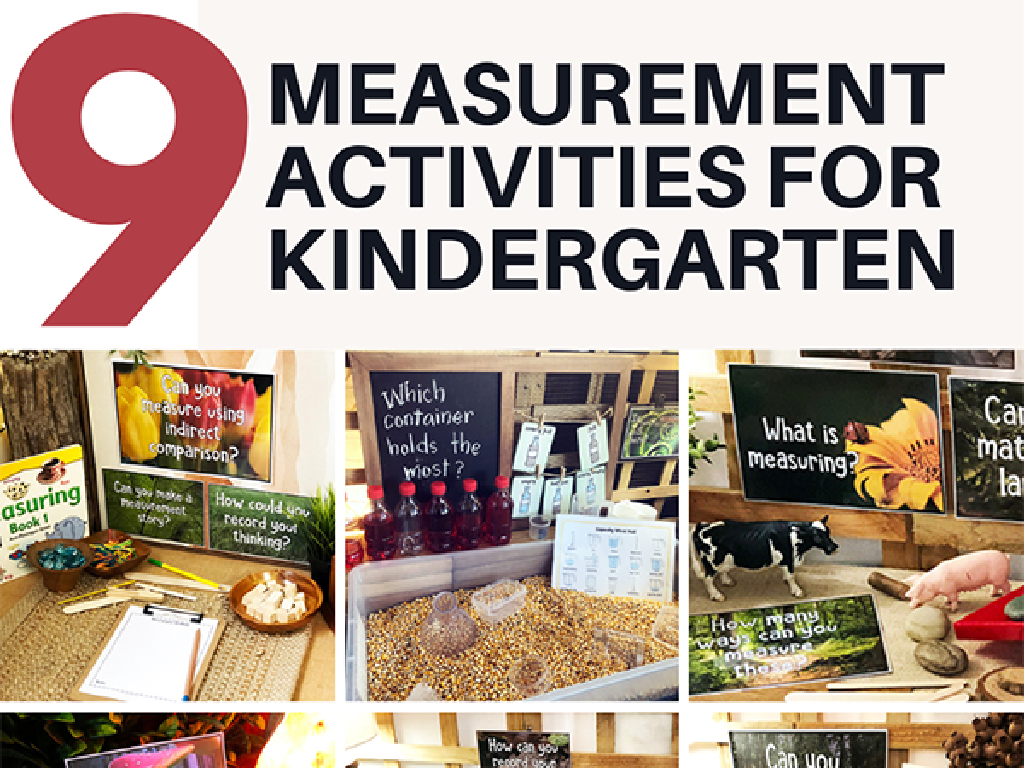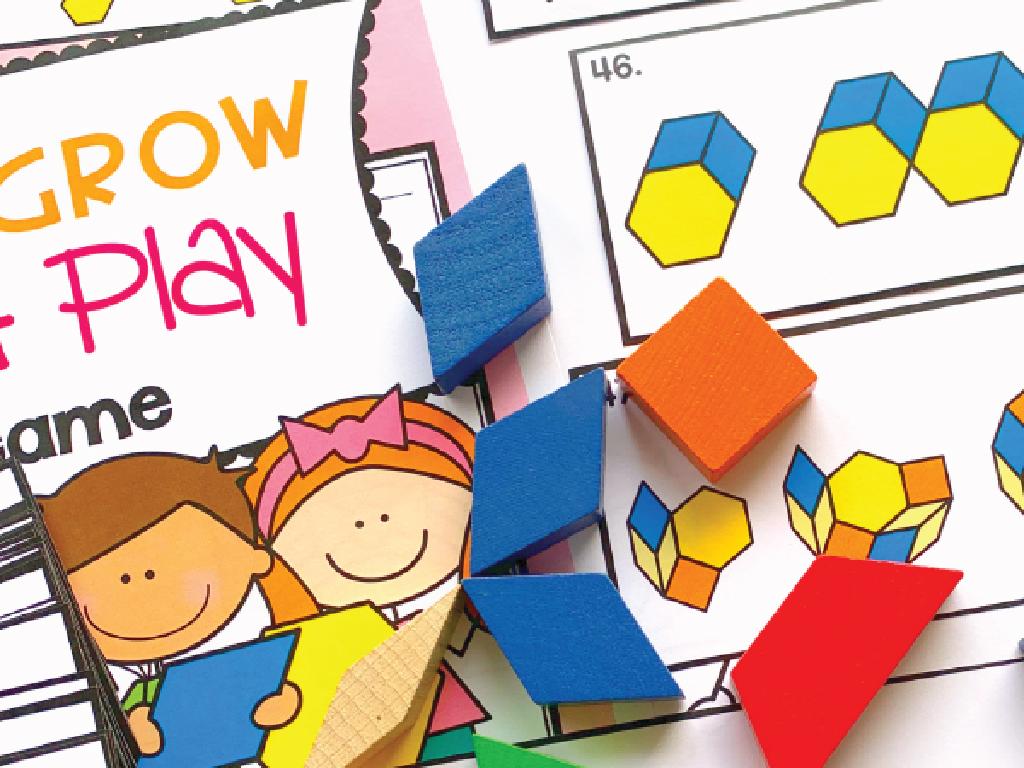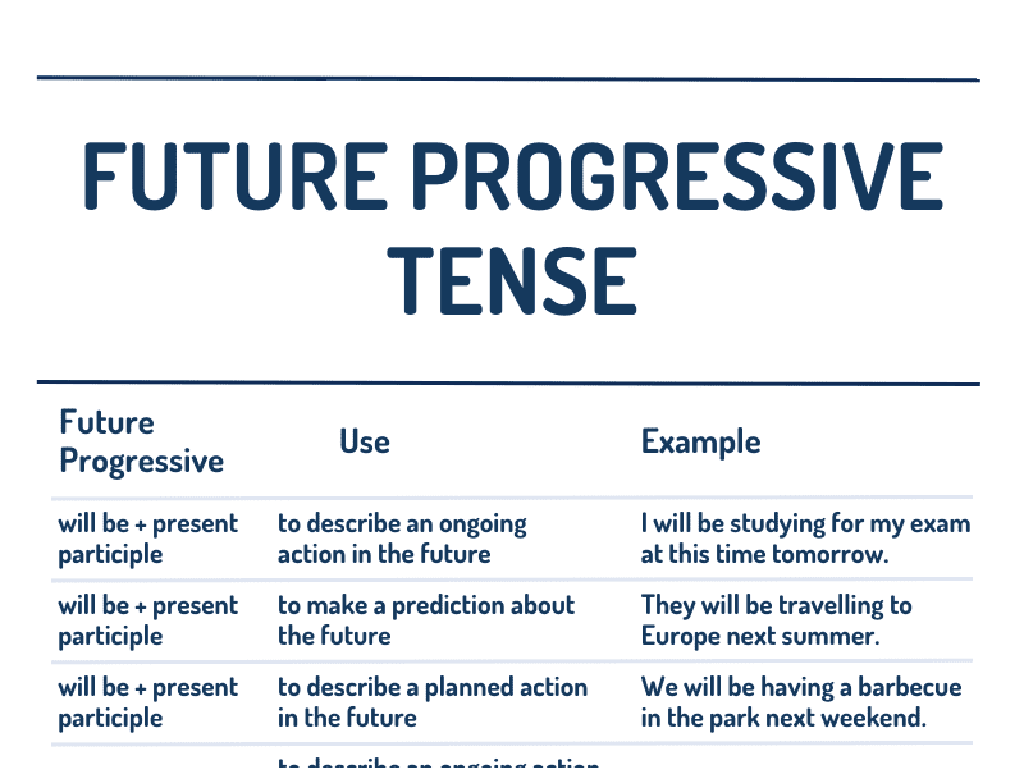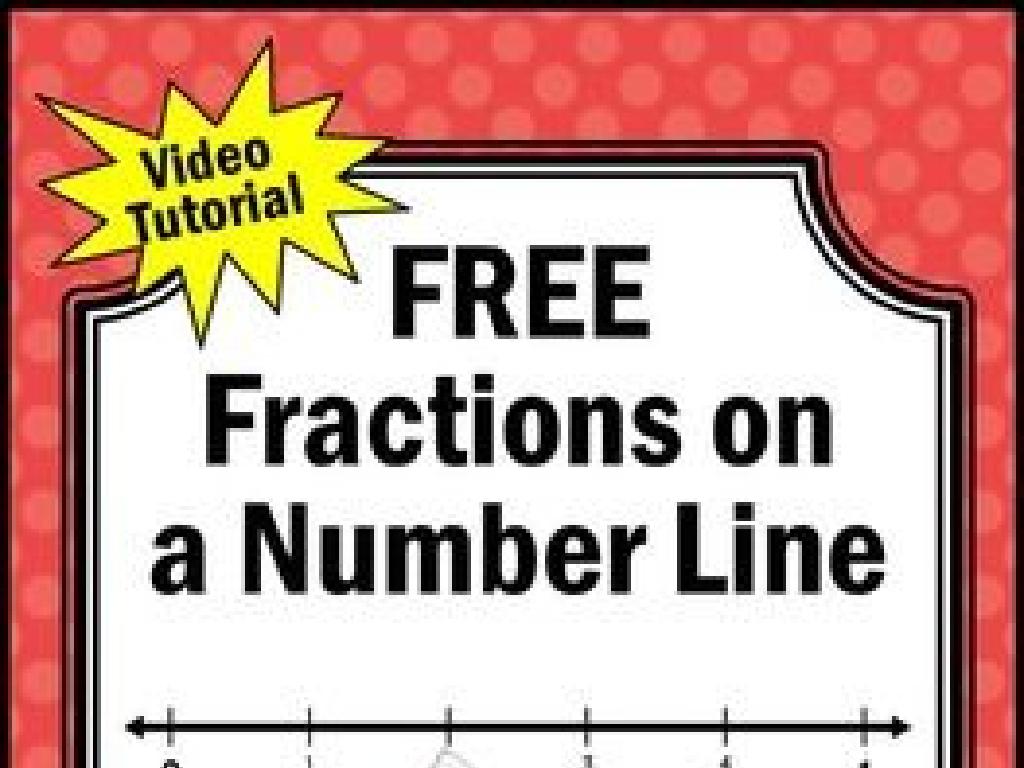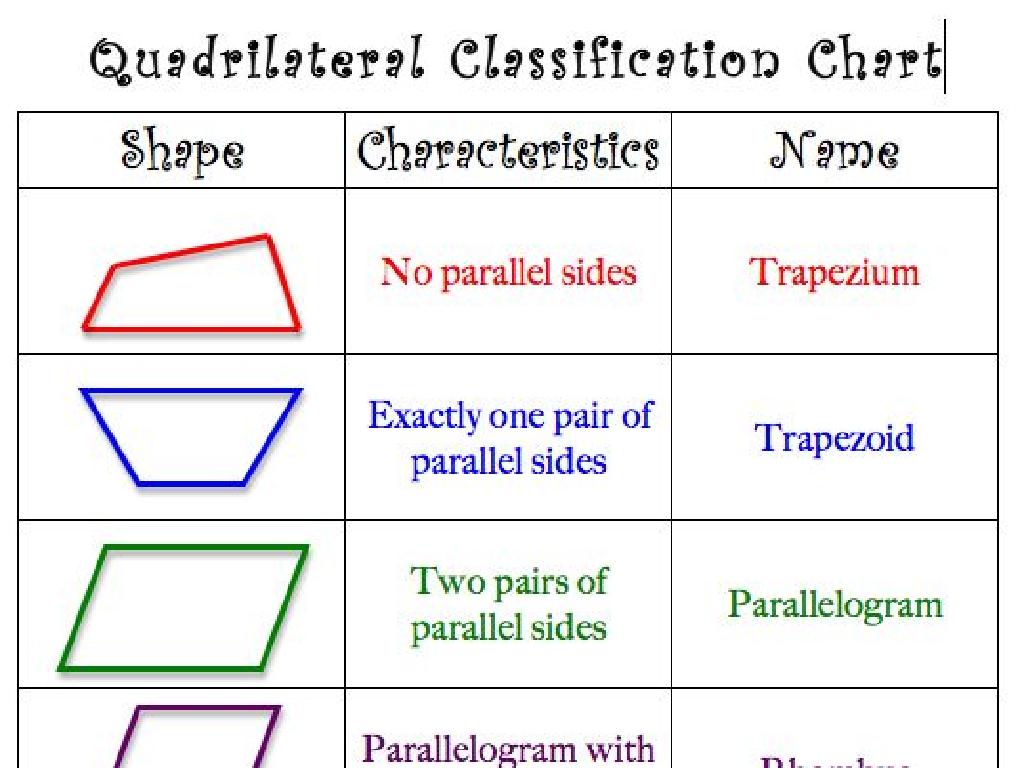Add 3 Or More Numbers Up To Millions
Subject: Math
Grade: Fourth grade
Topic: Addition
Please LOG IN to download the presentation. Access is available to registered users only.
View More Content
Introduction to Addition: Building Block Experts
– Welcome to our Math Adventure!
– Become an addition expert today!
– Adding numbers is like building blocks.
– Just like stacking blocks, we add numbers on top of each other.
– Practice makes perfect in addition.
– We’ll start with small numbers then add up to millions!
|
This slide is designed to excite students about learning addition and to frame it as an adventure. Emphasize that addition is a fundamental skill in math, much like the foundation of a building. Compare adding numbers to stacking building blocks to help them visualize the concept. Encourage them that with practice, they can become experts at adding large numbers, even up to millions. The goal is to create a positive and engaging atmosphere that motivates the students to learn and participate actively in the upcoming lessons.
Understanding Addition
– Addition combines numbers
– It’s like putting apples in a basket to find the total count.
– Imagine adding all toys together
– If you have 3 toys and get 2 more, now you have 5 toys in total.
– The plus sign (+) is key
– We use ‘+’ to add numbers, like 2 + 3 equals 5.
– Practice with large numbers
|
This slide introduces the basic concept of addition to fourth-grade students, using relatable analogies like gathering toys to make the concept more understandable. Emphasize the use of the plus sign as the symbol for addition, and encourage students to think of addition as combining groups of items to find a total. Provide examples with large numbers to illustrate addition up to millions, preparing them for more complex exercises. The goal is to ensure students are comfortable with the concept of addition before moving on to adding larger numbers.
Adding Small Numbers: Warm-Up Exercise
– Begin with simple addition
– Example: 2 + 3 equals what?
– This is a simple addition to get us started.
– Practice time: Add 4 and 5
– Think about putting 4 things with 5 things together.
– Share your answers aloud
– Let’s hear different answers and explain how we got them.
|
This slide is designed to ease students into the concept of addition by starting with small, manageable numbers. The example provided should be worked through together as a class to ensure understanding. During practice time, encourage students to visualize the addition of 4 and 5 by using objects or their fingers to count. This will help them grasp the concept of combining quantities. After the practice, ask several students to share their answers and the methods they used to arrive at them. This will not only reinforce the concept but also build their confidence in solving addition problems. The goal is to prepare them for adding larger numbers by ensuring they are comfortable with the basics.
Adding Larger Numbers
– Practice adding big numbers
– Example: 123 + 456 = ?
– Add together: 123 + 456. Start with ones place: 3 + 6
– Align numbers by place value
– Ones under ones, tens under tens, hundreds under hundreds
– Add the columns from right to left
– Add ones place, carry if needed, then tens, then hundreds
|
This slide introduces students to the concept of adding larger numbers, which can go up to millions. Start by showing an example with smaller numbers to ensure understanding of the basic addition process. Emphasize the importance of aligning numbers by their place values to avoid confusion. Demonstrate the process step by step, starting from the rightmost digits (ones place) and moving left, carrying over any extra value as needed. Encourage students to practice with various examples and provide immediate feedback to solidify their understanding.
Adding Large Numbers: Up to Millions
– Numbers can reach millions
– Example: 2 million + 3 million
– 2,000,000 + 3,000,000 equals 5,000,000
– Start from the rightmost digit
– Begin with the ones, then tens, hundreds…
– Line up the numbers by place value
– Ensures accurate addition
|
This slide introduces students to the concept of adding large numbers, specifically numbers in the millions. Emphasize that even though the numbers are big, the process of addition remains the same. Use the example provided to show how to add two large numbers together, highlighting the importance of starting from the rightmost digit and working left. Remind students to line up the numbers by place value to avoid confusion. This will help ensure they are adding the correct digits together. Practice with more examples in class to reinforce the concept.
Understanding Carrying Over in Addition
– Carrying over explained
– When digits add up to 10 or more, we carry the extra to the next place value.
– Example: Adding 15 and 27
– 5 + 7 equals 12, so we write down 2 and carry over 1 to the tens place.
– Practice carrying over
– Let’s add numbers together and carry over when needed.
|
This slide introduces the concept of carrying over, a fundamental skill in addition when dealing with multi-digit numbers. Start by explaining that when the sum of any column is 10 or more, we ‘carry’ the extra amount to the next column on the left. Use the example provided to show this visually, perhaps with a step-by-step illustration on the board. Then, engage the class with practice problems, ensuring they understand the concept of carrying over. Encourage students to explain the process in their own words to solidify their understanding. Provide additional examples if needed and prepare to assist students during the practice.
Adding Large Numbers Together
– We can add multiple numbers
– Start with an example: 123 + 456 + 789
– Add 123 and 456 to get 579, then add 789 for the total
– Tip: Add two numbers at a time
– Simplifies the process and reduces mistakes
– Practice with different sets of numbers
– Try adding 234,567 + 345,678 + 456,789
|
This slide introduces students to the concept of adding three or more large numbers, which can be up to millions. The strategy to simplify the process is to add two numbers first and then add the third to the sum. Start with a simple example to demonstrate the process, then encourage students to practice with different sets of numbers. Emphasize the importance of aligning the digits correctly and working from right to left. Provide additional examples and practice problems for students to work on, and be ready to assist if they encounter difficulties. This foundational skill will help them with more complex math problems in the future.
Group Activity: Addition Relay
– Understand the relay rules
– Work in teams to solve problems
– Each member adds one number
– Add your number carefully before passing it on
– Pass your solution to the next person
– Make sure to check the previous sum before adding your number
|
This activity is designed to encourage teamwork and reinforce the concept of addition with large numbers. Divide the class into small groups and give each team a set of addition problems involving three or more numbers up to millions. Each student in the team is responsible for adding just one number to the ongoing sum before passing the problem to the next team member. This continues until the final sum is reached. Teachers should monitor the activity to ensure fair participation and accurate addition. Possible variations include timed relays for a competitive edge, using dice to generate random numbers for addition, or incorporating real-life scenarios that require summing large numbers, such as budgeting a school event or planning a trip.
Class Activity: Add It Up!
– Practice adding numbers up to millions
– Pair up and solve worksheet problems
– Work with a classmate to add large numbers
– Review answers as a class
– We’ll go over the solutions together
|
This activity is designed to give students hands-on experience with adding large numbers, reinforcing the concept of place value and carrying over. Students should be paired up to encourage collaboration and peer learning. Provide worksheets with a variety of addition problems that include three or more numbers with values up to the millions. As students work through the problems, circulate the room to offer guidance and support. After the activity, bring the class together to review the answers, ensuring to address any common mistakes or misconceptions. Possible variations of the activity could include using dice to generate numbers to add, creating a game where students race to solve problems, or using real-life scenarios that require adding large numbers, such as calculating populations or distances.
Conclusion & Homework: Addition Practice
– Excellent work in class today!
– Homework: Addition worksheet
– Worksheet includes sums with 3+ numbers up to millions
– Practice adding large numbers
– The more you practice, the better you’ll get!
– Aim for accuracy and speed
– Check your work to ensure precision
|
As we wrap up today’s lesson on adding numbers up to millions, reinforce the students’ confidence by praising their efforts. The homework is designed to solidify their understanding of the concepts taught in class. Encourage them to take their time to practice the addition of large numbers, focusing on both accuracy and speed. Remind them that making mistakes is part of learning and that they should double-check their work. Provide strategies for adding large numbers, such as lining up the digits correctly and starting from the rightmost digit. Offer to answer any questions in the next class about the homework.

